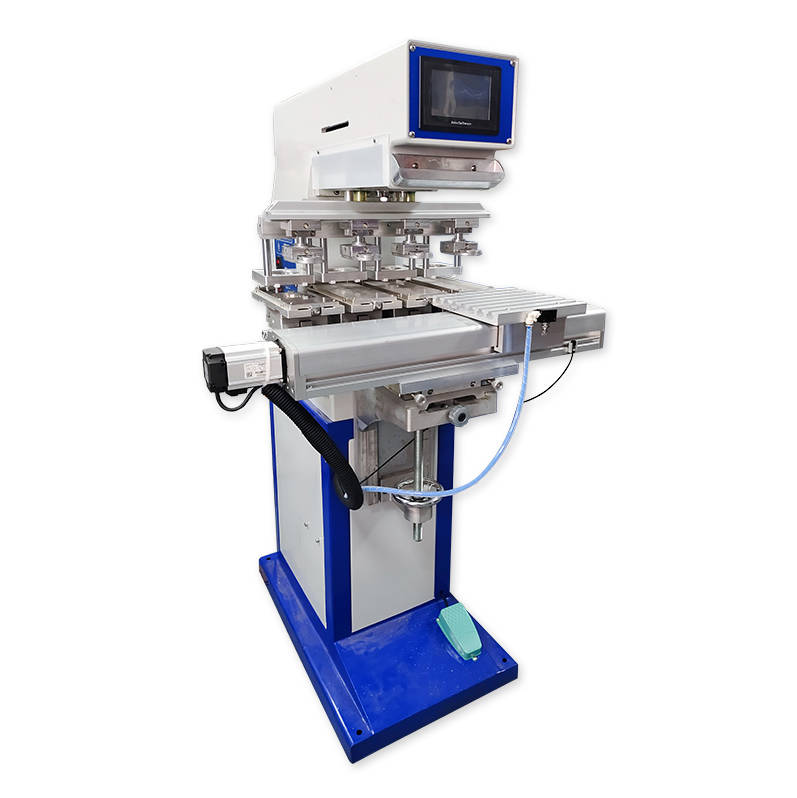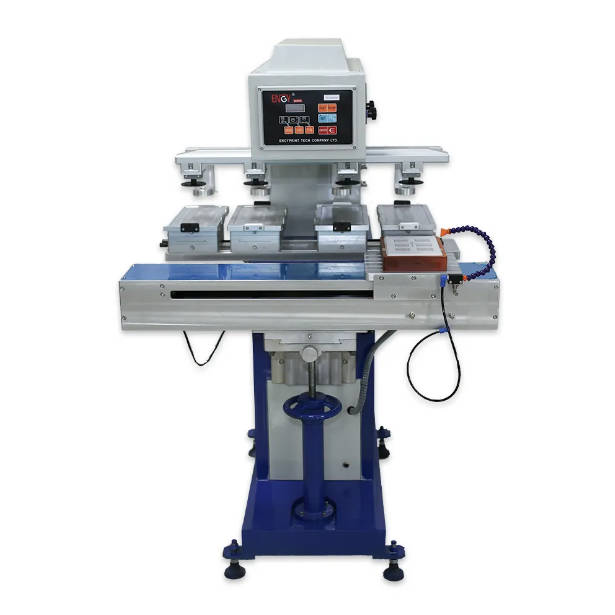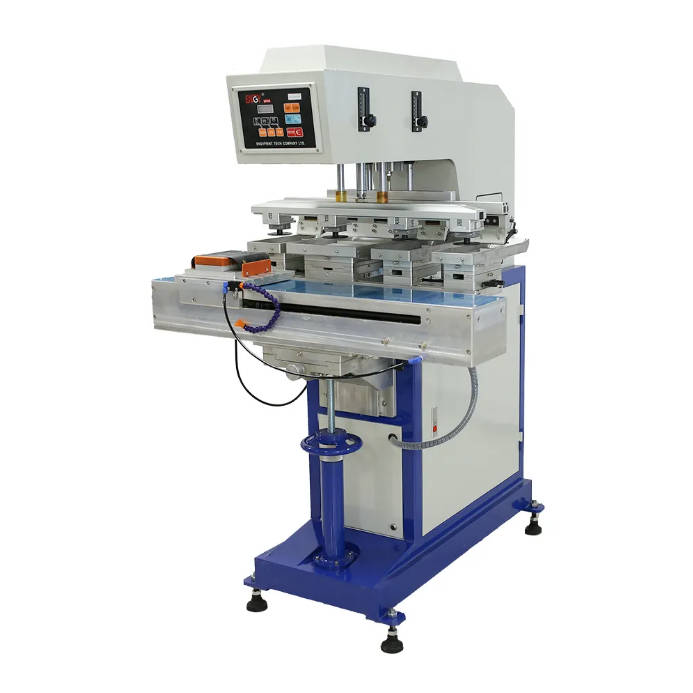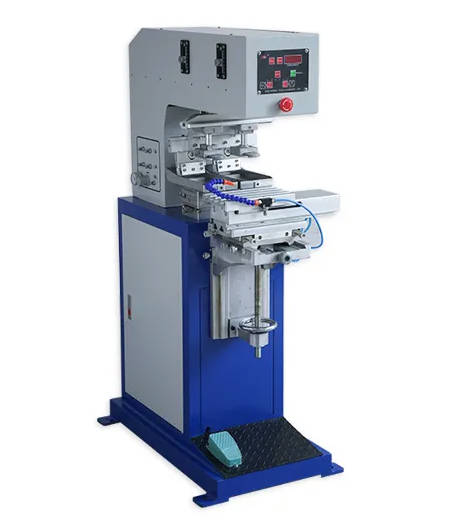1. Introduction
Pad printing is an indispensable technology in modern manufacturing, responsible for the precise and intricate markings on everything from computer keyboards and medical devices to promotional products and automotive components. Its unique ability to transfer a 2D image onto a 3D surface makes it incredibly versatile. However, the success of any pad printing job hinges on one critical component: the ink. The choice of ink can mean the difference between a durable, vibrant print and a failed application that peels, fades, or fails to adhere.
The purpose of this comprehensive guide is to demystify the world of pad printing inks for machine users and production managers. We will delve into the three primary categories—solvent-based, UV-curable, and silicone inks—exploring their composition, benefits, drawbacks, and ideal applications. By understanding the fundamental properties of each type, you can confidently select the right ink for your specific project, substrate, and production environment.
This article aims to address common questions and concerns, such as how to ensure proper ink adhesion, match an ink to a difficult substrate, and optimize production speed without sacrificing quality. Whether you are troubleshooting an existing process or setting up a new production line, this guide will serve as your essential resource for making informed decisions about your pad printing ink.

2. Overview of Pad Printing Inks
In pad printing, the ink is not merely a colorant; it is a complex chemical system designed to perform a series of precise actions. The ink must be fluid enough to be picked up from the etched printing plate (cliché) by the silicone pad, form a clean film on the pad as some solvent evaporates, and then transfer completely and adhere permanently to the final product (substrate).
The role of a pad printing ink is to provide colour, durability, and specific functional properties (like chemical or abrasion resistance) to the final print. Achieving this requires a delicate balance of pigments, binders (resins), solvents, and additives.
When selecting an ink, several key factors must be considered to ensure a successful outcome:
- Substrate Compatibility: This is the most crucial factor. The ink’s chemical composition must be compatible with the surface energy and material of the substrate (e.g., plastics like ABS or polypropylene, metal, glass, silicone) to create a permanent bond.
- Durability and Resistance: What conditions will the final product endure? The ink must meet requirements for abrasion resistance, chemical resistance (e.g., oils, cleaning agents), and environmental factors like UV exposure and temperature extremes.
- Drying and Curing Time: This directly impacts production speed. Solvent-based inks dry through evaporation, while UV-curable inks cure almost instantly under UV light. The choice affects workflow, handling, and overall throughput.
- Application Requirements: The desired finish (glossy, matte), opacity, and colour accuracy are all determined by the ink system.
- Regulatory and Safety Compliance: Factors like Volatile Organic Compound (VOC) emissions, and compliance with standards for medical or food-grade products are critical considerations.
The three main families of inks that address these factors are solvent-based, UV-curable, and silicone inks, each offering a unique profile of properties tailored to different industrial needs.
3. Solvent-Based Inks
Solvent-based inks are the most traditional and widely used inks in the pad printing industry. They are renowned for their versatility and robust adhesion to an extensive range of substrates, making them a go-to choice for many applications.
Composition and Characteristics
Solvent-based pad printing inks are composed of four primary components:
- Binder (Resin): This is the polymer that forms the ink film and is responsible for adhesion and durability. The type of resin (e.g., epoxy, acrylic, polyester) determines the ink’s properties and its compatibility with different substrates.
- Pigment: These are fine solid particles that provide the colour and opacity of the ink.
- Solvent: This is the liquid carrier that dissolves the resin and gives the ink its viscosity for printing. During the printing process, the solvent evaporates, leaving the solid resin and pigment on the substrate.
- Additives: Special chemicals are added in small quantities to modify ink properties, such as flow, drying speed (retarders/accelerators), and surface finish.
Advantages
- Exceptional Versatility: Solvent-based inks offer the widest range of substrate compatibility, adhering well to many plastics (ABS, PVC, acrylic, polystyrene), metals, glass, ceramics, and wood. This makes them a reliable choice for diverse product lines.
- Strong Adhesion: The solvents in these inks often “bite” into the surface of plastic substrates, creating a powerful chemical bond that results in a highly durable and permanent print.
- Cost-Effective: Generally, solvent-based inks and their associated equipment have a lower initial investment cost compared to UV systems.
- Flexibility in Drying: The drying speed can be easily adjusted by using different types of thinners and retarders, allowing operators to fine-tune the process for different environmental conditions and machine speeds.
Disadvantages
- Longer Drying Times: The ink dries through solvent evaporation, which can take anywhere from a few seconds to several minutes for handling, and up to several days for a full cure. This can slow down production and require significant space for drying racks.
- VOC Emissions: The evaporation of solvents releases Volatile Organic Compounds (VOCs) into the atmosphere. This necessitates proper ventilation systems to protect workers and comply with environmental regulations, adding to operational costs.
- Multi-Component Systems: Many solvent-based inks are two-component systems, requiring the addition of a hardener or catalyst before printing. This adds a step to the process and introduces a limited pot life (the time during which the mixed ink is usable).
Common Applications
Thanks to their versatility, solvent-based inks are used across countless industries:
- Promotional Products: Pens, keychains, and golf balls.
- Electronics: Markings on housings, buttons, and connectors.
- Automotive: Symbols on dashboard buttons, control dials, and engine components.
- Appliances: Logos and functional markings on kitchen and home goods.
Best Practices for Use
- Ventilation is Essential: Always use these inks in a well-ventilated area with an appropriate extraction system to manage VOC fumes and ensure operator safety.
- Accurate Mixing: For two-component inks, use a gram scale to measure the ink and hardener precisely according to the manufacturer’s technical data sheet. Incorrect ratios will lead to adhesion failure or improper curing.
- Controlled Thinning: Use only the recommended thinner for the ink series. Adjust the thinner ratio based on ambient temperature and humidity to control viscosity and drying speed on the cliché. A common starting ratio is 10-20% thinner by weight.
4. UV-Curable Inks
UV-curable inks represent a more modern approach to pad printing, offering significant advantages in speed and durability. Instead of drying through evaporation, these inks cure (harden) almost instantaneously when exposed to high-intensity ultraviolet (UV) light.
Composition and Curing Process
UV-curable inks have a different chemical makeup than their solvent-based counterparts. They contain:
- Monomers and Oligomers: These are the liquid building blocks that, when exposed to UV energy, cross-link to form a solid, durable polymer.
- Photoinitiators: This is the key component. It absorbs the UV light and kicks off the chemical reaction (polymerization) that cures the ink.
- Pigments: Provide the colour.
- Additives: Used to control viscosity, adhesion, and other physical properties.
The curing process is a photochemical reaction. After the UV ink is transferred to the substrate, the product passes under a UV lamp. The focused UV energy activates the photoinitiators, causing the monomers and oligomers to instantly link together and transform the liquid ink into a solid, fully cured print.
Advantages
- Extremely Fast Curing: Curing takes only a fraction of a second. This eliminates drying time as a production bottleneck, allowing for immediate handling, packaging, or subsequent printing operations, which dramatically increases throughput.
- High Durability: The cross-linked polymer created during the curing process is exceptionally robust, offering superior resistance to abrasion, scratching, and chemicals compared to most solvent-based inks.
- Eco-Friendly: UV inks are 100% solids and contain no solvents, meaning they do not emit VOCs. This makes them a more environmentally friendly option and reduces the need for costly ventilation and solvent management systems.
- Consistent Print Quality: Because the ink does not dry in the cliché, its viscosity remains stable throughout a production run, leading to more consistent and repeatable print quality.
Disadvantages
- Higher Initial Costs: UV inks, photoinitiators, and the required UV curing equipment (lamps and power supplies) represent a significantly higher upfront investment than solvent-based systems.
- UV Equipment Requirements: The process is entirely dependent on the proper functioning of the UV curing system. Production stops if the lamp fails or its output degrades.
- Adhesion Challenges: While durable once cured, UV inks can sometimes struggle to adhere to certain low-surface-energy plastics without pre-treatment (such as flame, corona, or plasma treatment).
Common Applications
The high durability and speed of UV inks make them ideal for demanding applications:
- Medical Devices: Catheters, syringes, and diagnostic tools that require highly durable, biocompatible, and non-toxic markings resistant to sterilization processes.
- Electronics: High-volume printing on USB drives, cables, and components where speed is critical.
- Automotive and Aerospace: Markings that must withstand harsh environments.
- Glass and Drinkware: Decorative printing on bottles and glassware where abrasion resistance is key.
Best Practices for Use
- Proper UV Lamp Maintenance: Regularly check the UV lamp’s output with a radiometer to ensure it is delivering the correct energy dose (measured in mJ/cm²). Replace bulbs according to the manufacturer’s recommendations to guarantee a full cure.
- Substrate Preparation: For difficult substrates, pre-treatment is often necessary to increase surface energy and promote adhesion. Always test adhesion before starting a full production run.
- Safety First: UV light is harmful to eyes and skin. Ensure all machine guards and safety interlocks are in place and functioning correctly. Operators should wear UV-blocking safety glasses.
5. Silicone Inks
Silicone inks are a highly specialized category designed for one primary purpose: printing on silicone rubber substrates. Standard solvent-based and UV inks will not adhere to silicone due to its extremely low surface energy. Silicone inks are formulated to create a permanent chemical bond with silicone surfaces.
Composition and Unique Properties
Silicone inks are typically two-component systems consisting of a silicone-based polymer (resin), pigment, and a catalyst or cross-linking agent. When mixed, these components will cure with the application of heat to form a flexible, durable print that becomes part of the silicone substrate itself.
The key property of silicone ink is its ability to stretch and flex with the silicone part without cracking or peeling. This is because the cured ink shares the same fundamental chemical properties as the substrate it is printed on.
Advantages
- Excellent Adhesion to Silicone: Silicone inks are the only effective solution for achieving a permanent print on silicone rubber products. They form a covalent bond through cross-linking with the substrate.
- Flexibility and Elasticity: The print is as flexible as the silicone part itself, making it perfect for items that are repeatedly stretched, compressed, or bent.
- High-Temperature Resistance: Cured silicone ink can withstand high temperatures, making it suitable for products that will be autoclaved (sterilized) or used in hot environments.
- Biocompatibility: Many silicone inks are formulated to meet medical-grade standards (e.g., USP Class VI), making them safe for use on medical devices and healthcare products.
Disadvantages
- Limited Substrate Compatibility: These inks are designed exclusively for silicone and will not adhere to other materials like plastics or metals.
- Heat Curing Required: Silicone inks must be cured with heat, typically in a convection oven for several minutes (e.g., 10-15 minutes at 100-150°C). This adds time, energy costs, and an extra step to the production process.
- Specialized Handling: The two-component nature and pot life require careful mixing and management. The ink viscosity can also be more challenging to control than other types.
Common Applications
The use of silicone inks is directly tied to the growing market for silicone products:
- Medical Products: Silicone tubing, breathing masks, and implantable devices.
- Consumer Goods: Silicone kitchenware (spatulas, baking mats), swim caps, and watch bands.
- Electronics: Silicone keypads for remote controls and keyboards, protective phone cases, and wearable technology like fitness trackers.
Best Practices for Use
- Surface Treatment: While designed for silicone, the ink’s adhesion can be improved by post-curing the silicone parts or cleaning them with a recommended solvent to remove any residual mold release agents before printing.
- Precise Curing Conditions: Follow the technical data sheet for the exact curing temperature and time. Insufficient heat will result in an under-cured, tacky print, while excessive heat can damage the silicone part.
- Thorough Mixing: Ensure the ink base and catalyst are mixed thoroughly in the correct ratio. Incomplete mixing is a common cause of curing failures.
6. Comparison of Ink Types
Choosing the right ink requires balancing the demands of the substrate, production environment, and end-use application. The table below provides a side-by-side comparison of the three main ink types.
Side-by-Side Comparison Table
| Feature | Solvent-Based Inks | UV-Curable Inks | Silicone Inks |
| Drying/Curing Method | Solvent Evaporation (Air Dry or Heat Assist) | Ultraviolet (UV) Light Exposure | Heat Curing (Oven) |
| Drying/Curing Time | Seconds to minutes for handling; hours to days for full cure | < 1 second | 5-15 minutes |
| Durability | Good to Excellent | Excellent | Excellent (especially flexibility) |
| Substrate Compatibility | Very Wide (Plastics, Metals, Glass, Wood) | Moderate to Wide (Plastics, Metals, Glass) | Extremely Limited (Silicone Only) |
| Initial Cost | Low | High | Medium to High |
| Environmental Impact | High (VOC Emissions) | Low (No VOCs) | Low (No VOCs) |
| Production Speed | Slow to Medium | Very Fast | Slow (due to oven curing) |
Scenarios for Choosing Each Ink Type
- Choose Solvent-Based Ink when:
- You are printing on a wide variety of different substrates.
- Initial budget for equipment is a primary concern.
- Production volumes are low to medium, and long drying times are acceptable.
- The part geometry makes it difficult for UV light to reach the entire printed surface.
- Choose UV-Curable Ink when:
- High-speed, high-volume production is the top priority.
- The product requires superior abrasion and chemical resistance.
- Environmental regulations regarding VOCs are strict.
- The substrate is compatible, and the upfront investment is feasible.
- Choose Silicone Ink when:
- The substrate you are printing on is made of silicone rubber. This is a non-negotiable requirement.
- The final product must be flexible, heat-resistant, or biocompatible.
- A post-print heat curing step can be integrated into your workflow.
7. Practical Considerations for Pad Printing Machine Users
Selecting the right ink is only half the battle. Implementing it successfully into your production process requires attention to detail.
How to Select the Right Ink
- Identify Your Substrate: This is always the first step. If you are unsure of the exact plastic, send a sample to your ink supplier for testing and recommendation.
- Define Durability Needs: List all resistance requirements: abrasion, alcohol, oils, sterilization, outdoor exposure, etc. This will narrow down the suitable ink series.
- Evaluate Production Volume: For high volumes, the speed of a UV system can provide a rapid return on investment. For short runs, the flexibility and low cost of a solvent-based system may be more practical.
- Consider Your Budget: Factor in not just the cost of the ink per kilogram, but also the cost of consumables (thinners, hardeners), equipment (UV lamps, ovens), and compliance (ventilation).
Common Challenges and Troubleshooting Tips
- Poor Ink Adhesion: This is the most common issue.
- Cause: Incorrect ink for the substrate, improper mixing of two-component inks, insufficient curing (time/temperature/UV energy), or surface contamination (mold release, oils).
- Solution: Perform a cross-hatch adhesion test (ASTM D3359). Confirm you are using the right ink series. Clean the substrate before printing. Double-check your mixing ratios and curing parameters. Consider pre-treatment if necessary.
- Inconsistent Prints (Fading, Voids):
- Cause: Ink viscosity is incorrect (too thick or too thin), or the ink is drying too quickly on the cliché or pad.
- Solution: Adjust the amount of thinner or retarder based on ambient conditions. For UV inks, check for drafts that could affect the ink. Ensure the doctor blade is sharp and set correctly.
Maintenance and Safety
- Solvent Inks: Store solvents and hardeners in sealed containers in a designated fire-safe cabinet. Ensure good housekeeping to prevent spills.
- UV Inks: Clean spills immediately as cured ink is very difficult to remove. Follow all safety protocols for UV light exposure.
- Silicone Inks: Keep catalysts separate from ink bases until ready to mix. Clean equipment thoroughly after use, as cured silicone ink is nearly impossible to remove from clichés and ink cups.
Compatibility with Pad Printing Machines
- Ink Viscosity: The viscosity must be suitable for your machine’s ink cup or inkwell system. It needs to be low enough to flood the cliché properly but high enough not to run.
- Cliché Requirements: The etch depth of your cliché may need to be adjusted for different ink types. UV inks, being 100% solids, often work better with a shallower etch than solvent-based inks, which lose volume as they dry.
8. Conclusion
The selection of a pad printing ink is a critical decision that directly influences print quality, production efficiency, and product durability. Solvent-based inks remain the industry’s versatile workhorse, offering excellent adhesion across a vast range of materials at a low initial cost. UV-curable inks are the champion of speed and durability, providing an eco-friendly solution for high-volume, demanding applications. Silicone inks occupy a vital niche, offering the only reliable method for permanently marking flexible silicone rubber products.
To optimize your pad printing results, always begin by carefully evaluating the specific needs of your project—the substrate, the end-use environment, and your production goals. Never hesitate to consult with your ink supplier; their expertise is invaluable in navigating the complexities of ink chemistry and adhesion. By pairing the right ink with best practices in handling, curing, and machine operation, you can ensure vibrant, durable, and reliable prints on every part.
9. FAQs
- Can I mix different ink types? No. Never mix solvent-based, UV, and silicone inks, or even different ink series from the same manufacturer unless explicitly instructed. Their chemistries are incompatible and will result in a useless mixture and potential damage to your equipment.
- What is the most cost-effective pad printing ink option? On a per-kilogram basis, one-component solvent-based inks are typically the cheapest. However, true cost-effectiveness depends on the total operational cost. For high-volume production, the increased throughput and reduced waste of a UV system can make it more cost-effective in the long run, despite the higher initial investment.
- How do I test if an ink is fully cured? For solvent-based and silicone inks, a “thumb-twist test” after the recommended drying time is a simple check; if the print smudges or feels soft, it is not fully cured. The most reliable method for all ink types is a cross-hatch adhesion test, followed by any required chemical or abrasion resistance tests specified for the product.




